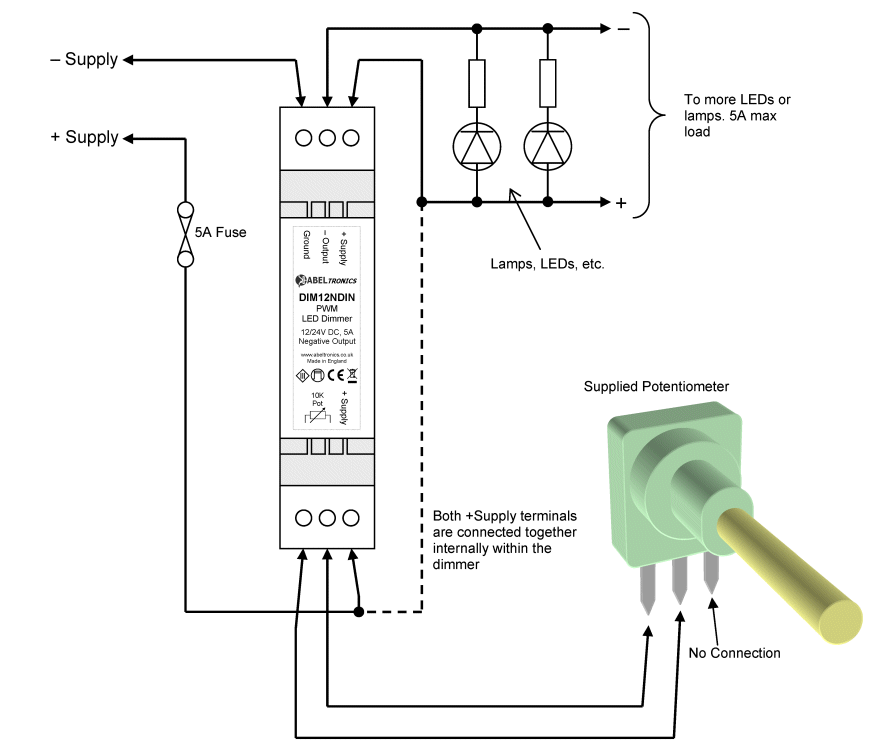


The frequency of the PWM signal is in this case 10Hz(1/0.1). For example, a PWM signal with 25% duty cycle and 0.1 second time period, the signal stays high for 0.025 seconds and stays low for 0.075 seconds. Duty Cycle(%) specifies how long the pulse stays HIGH and LOW for given time period. PWM signal are often specified in terms of Duty Cycle. The PWM signal generated from Arduino Nano/Uno are 490Hz or 970Hz depending upon the pin used. Humans can see or detect flickering of signals upto around 400Hz. PWM signal is often referred as analog signal but in reality it is not real continuous analog signal rather they are square waves which are repeatedly turned on and off with varying pulse width at such a high rate which gives perception to human that they are continuous signal. The longer the pulse width the longer the output voltage. The pulse widths are time duration over which voltage stays HIGH and LOW for a given duty cycle. PWM stands for Pulse Width Modulation which is a signalling technique where pulses of different widths are generated.
ARDUINO PWM WITH POTENTIOMETER SOFTWARE
Afterwards we show different application example of PWM which includes controlling brightness of a LED with software alone and using Potentiometer, control of motor and sound generation.
ARDUINO PWM WITH POTENTIOMETER HOW TO
First we explain briefly about PWM, then explain how to generate PWM signal with Arduino Nano. The time difference is 1 ms which agrees with the observations.In this tutorial we will show different application examples of PWM(Pulse Width Modulation) using Arduino Nano. T2 = -math.log ( (VS - VL) /VS) * RES * CAP T1 = -math.log ( (VS - VH) /VS) * RES * CAP VH = VMED + 29.6e-3 - high voltage as measured VL = VMED - 27.2e-3 - low voltage as measured Introducing our values for the resistor and capacitor (using Lua) we get: VS = 5.0 - supply voltage These figures will be on the RC discharge graph at roughly the point indicated: The general formula for calculating the time taken by a RC network to reach a certain voltage is: t = -log((V-Vc)/V)R*CĪlso Mathematical treatment of charging and discharging a capacitor. Indeed, the averaged output is 57 * 2 = 114 mV Now we can see that the ripple is about 57 mV (the output of the op-amp would be double that). First, the image posted above looks a bit noisy, so let's take an average of the input to the op-amp: You might ask "Why 138 mV of ripple? Why not 50 mV? Why not 200 mV?". I had a potentiometer connected to A0 and adjusted it to alter the duty cycle of the PWM output on pin D3. The larger resistance make the output less responsive to changes at the input (it takes time to charge or discharge the capacitor) but in testing it still seems pretty responsive. For example, making it 10 k reduces the ripple to 86 mV. We can reduce the ripple by using a larger resistor for R3. The scale for the blue channel has changed in this image, and the cursor shows that we have around 140 mV of ripple. Switching the scope to AC coupling we can see how much ripple we have in the op-amp output: With a 100% duty cycle, the output is 10 V. You can see from the scope traces that the yellow line (the PWM output) has a 50% duty cycle, and the blue line (the op-amp output) is 5 V and has a slight ripple. This shows the difference between the Arduino PWM output, and the output of the op-amp: The resistor R3 and the 10 ♟ capacitor form a low-pass filter that filters the PWM signal from the Arduino into a more-or-less smooth DC voltage. We need to supply a bit more than 10 V to the op-amp supply pin (pin 8) because this is not a rail-to-rail op-amp, that is, it cannot output all the way up to its supply voltage. Thus, if we have 5 V coming from D3 we will have 10 V at the output of the op-amp. Since R2 and R1 in this case are both 1 k then the output will be the input multiplied by: 1 + (1000/1000) = 2 The op-amp shown is hooked up as a non-inverting amplifier, where the gain is given by: You can take an analog (PWM) output from the Arduino and turn it into 0 to 10 V DC using something like this:


 0 kommentar(er)
0 kommentar(er)
